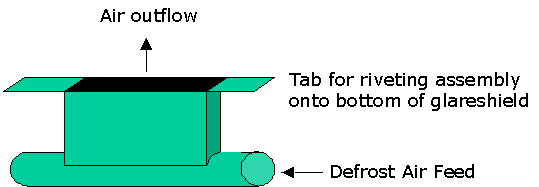The cabin heater is not very effective in very cold weather. This can be at least partially fixed by replacing the segmented aluminum heater duct tubing with scat tubing, so as to not radiate so much heat before it enters the cabin. The tubing to replace is routed under the copilot floorboard from the firewall to a splitter beneath the copilot seat, and ultimately to the rear cabin duct just behind the copilot seat on the rear cabin floorboard. This area can be accessed by removing the copilot seat cushion (trivial) and from the rudder and brake cylinder inspection hatch on the belly of the aircraft, located underneath the front cabin floorboards.
If you're rebuilding a Cruisemaster from the ground up, I'd also recommend adding defroster vents around the windshield. There is no provision for defrosting from the factory, which is awkward on the ground while waiting for takeoff on cold or moist days. A few slots could be cut into the aluminum glareshield panel parallel to the line of the windshield. Air would be blown through these slots via fabricated fiberglass or welded aluminum fittings connected to a small scat hose routed down the right side of the firewall and fuselage right sidewall. The whole thing would connect to the cabin vent duct below the copilot's floorboards. The air feed fittings would look something like this:

You could add these from beneath the panel with a lot of strained back muscles and scraped knuckles, but I don't think it'd be worth the hassle. With the cover off, this would be an easy job.